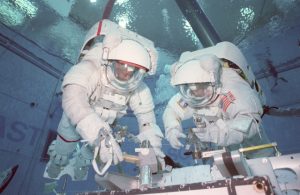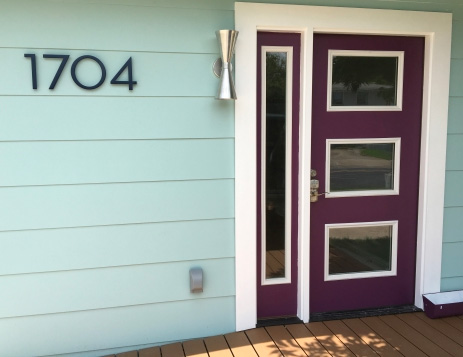 You’ve probably heard that astronauts practice their work underwater, right? I remember learning that as a child and thinking it was “so cool,” because I could then pretend that I was an astronaut the next time I went swimming. ;^) Remembering this recently, I was struck by how similar this is to therapy. Keep reading and I’ll explain.
You’ve probably heard that astronauts practice their work underwater, right? I remember learning that as a child and thinking it was “so cool,” because I could then pretend that I was an astronaut the next time I went swimming. ;^) Remembering this recently, I was struck by how similar this is to therapy. Keep reading and I’ll explain.
Before going into space, astronauts practice and practice and practice. They practice the things they’ll do, the experiments they’ll run, and the hardware they’ll install. But since their work in outer space will be conducted in a zero-gravity situation, the astronauts have had to come up with a way to simulate zero-gravity here on Earth. To this end, they have built enormous pools for practicing their work, because the buoyancy of being underwater simulates the zero gravity of outer space. It’s not exactly the same, but it’s close enough, and it allows them to get more skilled and confident in their tasks.
So, therapy. Therapists help clients identify skills that need strengthening, provide education when needed, and sometimes, our offices can be very much like an astronaut’s pool. Problems with your Mother-in-law? We’ll role-play your last conflict and you can practice gentle assertiveness. Trouble staying calm when your toddler is acting like a wild animal? You be the toddler and I’ll be the parent, and we’ll experiment with different responses. Perhaps the client is a 4th grader who has difficulty navigating around a bully-we’d practice what she could say the next time the bully calls her a name. And sure, it isn’t exactly the same, but it’s about as similar as outer space and a pool. What’s exactly the same is you. You (or your kid) are present in both situations. Any thinking and feeling about the problems, with a focus on thinking positively and practicing solutions, will help train your brain to move automatically towards those solutions in future experiences. If you can practice and get skillful in the simulation, then you’ll be a step closer towards responding the way you’d like in the real world.








